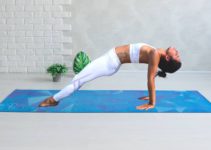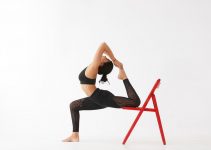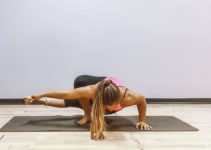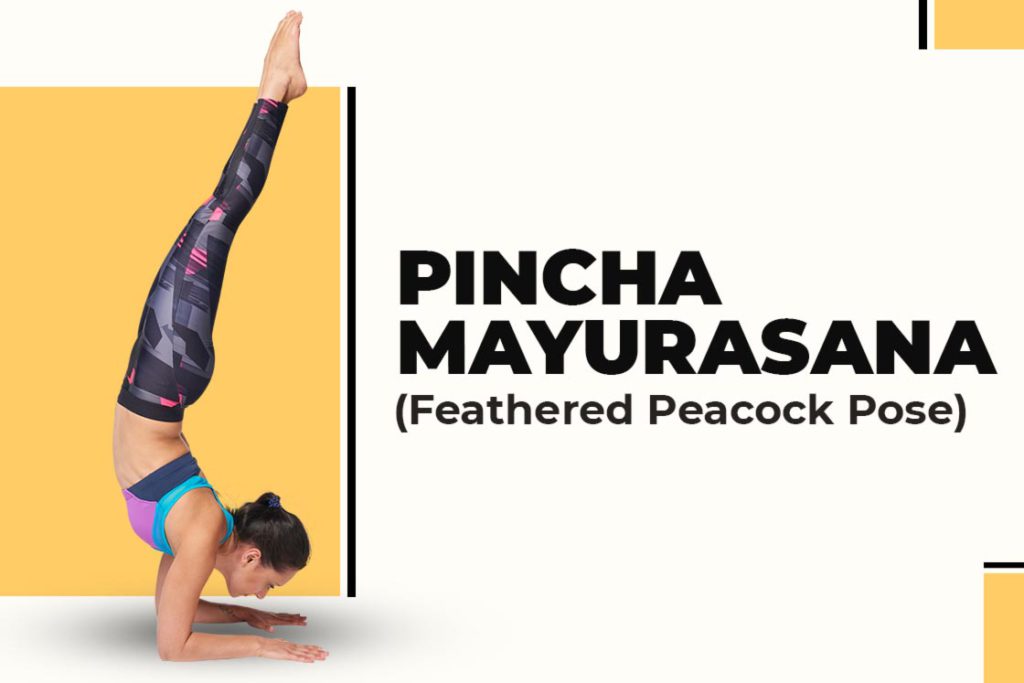
| Sanskrit Pronunciation | Pincha Mayurasana (PIN-chuh my-YUR-AH-sah-nah) |
| Meaning | Pincha = feathered / Mayur = Peacock / asana = pose |
| Pose Type | Inversion stretching |
| Pose Level | Advanced |
| Anatomy | Shoulder, Forearm, inner thigh, core |
| Other Names | Forearm balance pose, Forearm Stand, |
Pincha Mayurasana is an advanced level balancing pose in which whole body weight is supported on forearms.
Balancing in this Asana improves focus and concentration which is the key element to remain in the pose. Apart from this, it results in the strengthening of the forearms and toning of the core muscles.
Meaning
Pincha Mayurasana is a Sanskrit name to the asana, which can be translated as ‘Pincha’ means ‘Feather’, ‘Mayur’ means ‘Peacock’, and ‘Asana’ means ‘Pose’. In this way, Being in this asana practice resembles a Peacock showing its colorful feathers and spreading positivity all around.
In Hinduism, Peacock is a symbol that brings luck and prosperity to loved ones. Apart from this, Peacock represents self-confidence, dignity, pride, and beauty. So, if an individual practices this Asana he/she aspires their inner self to acquire all those characteristics by sheer practice and willpower. This not just refines the character of a person but also strengthens the Emotional, Mental, and Physical aspects.
Practice Guide of Pincha Mayurasana
By considering the following poses in their practice one can perform the pose with ease and refinement.
Contraindications
- Practitioners with the condition of High blood pressure should avoid doing this Asana due to inversion, which might put some extra pressure on the heart to circulate the blood.
- Women with Pregnancy and those who are under menstruation should refrain from doing Pincha Mayurasana. This would be unfit for both situations.
- Any kind of surgery in the abdomen or near the waist region might not be advised to perform this asana because of the active involvement of the core region, which could be harmful.
- People with injury to the back, neck, wrist, and shoulder should strictly avoid the practice of Pincha Mayurasana. Due to the inversion, it lays tremendous weight on concerned regions, which might worsen the previous condition.
Preparatory Pose
- Gomukhasana (Cow Face Pose)
- Adho Mukha Vrksasana (Handstand Pose)
- Uttanasana (Standing Forward Bend)
How To Do Pincha Mayurasana
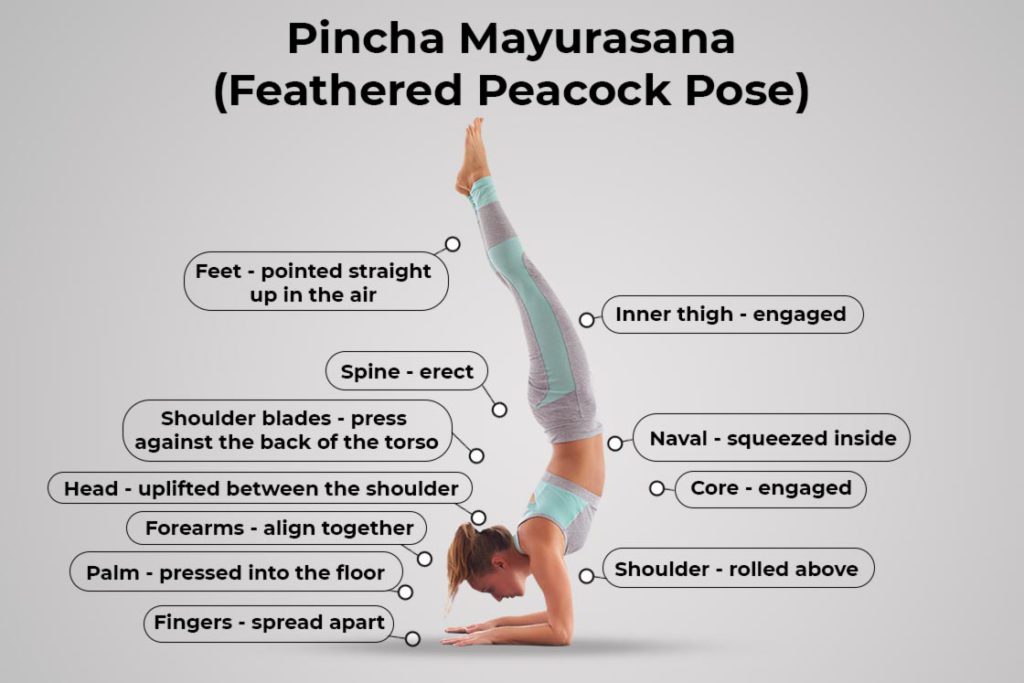
- Come into Adho Mukha Svanasana. Now, rest down your elbows and place your forearms on the floor. Your forearms should be under the shoulder and are align together.
- From here, raise your head up and make a right angle between your forearms and upper arm by walking your legs toward your head.
- Now, firm up your shoulder blades inside the back of your torso to set up a launchpad into the inversion.
- Afterward, bend your right knee and try to hop up your right leg while keeping your left heel on the floor extending through the heel. Make few attempts with the right leg to find balance while maintaining coordination with the left leg as well.
- As your right leg sets up call up your left leg and straightens both legs in the air while maintaining the posture on the foundation of palms, elbows, and forearms.
- Now, draw in your navel, engage your inner thigh and abdominal muscles to provide activeness in the lower body. Here, your head should be above the floor and gazing in the front direction.
- Once you are in the posture maintain it for 15 to 20 seconds or one can increase it by practice. After that, bring your left leg down with an exhalation and then your right leg by keeping the balance.
- Now, walk back your feet and straighten up your elbows. Finally, return to the Adha Mukha Svanasana and then relax.
Follow Up Pose
- Sirsasana (Headstand)
- Adho Mukha Svanasana (Downward Facing Dog Pose)
- Adho Mukha Vrksasana (Handstand)
Beginners Tips
- Pincha Mayurasana is an active practice that requires strong and stable shoulders and forearms. These characteristics usually remain unavailable to beginners. Therefore, considering a rigorous practice of Plank pose to acquire necessary strength is advisable to beginners before practicing this asana.
- Beginners might face difficulty in straightening the legs in the air. To overcome this problem they should try multiple attempts to kick up one leg while engaging another to get into the posture.
- One should show his/ her patience while leaping into the posture. Taking legs up in a go is a task of a skilled practitioner. So, those who have performed it as a beginner should have a slow going and returning back from the posture.
Precautions
- Practitioners should avoid dropping down of the head while being the Pincha Mayurasana, as it would distribute the concentration, which is to be gathered by hanging the head up in between the shoulder and gazing right in front of the Asana.
- Practitioners with stiffened armpits and inner thigh might face a problem of the deep arch in their lower back, which could result in falling backward. So to avoid this, one should bring his/her front ribs inside and straight-up heels up in the air.
- While balancing the posture keeps your shoulder uplifted and make sure that your forearms are aligned parallel. Spread up your fingers to increase the foundation and press palms deeper into the floor to support the posture, respectively.
Props and Modifications
- The entire weight of the torso and lower body is bear up by the palms, forearms, and elbows. So, in case of hurting practitioners can use a soft blanket under their elbows.
- Initially, it has been a herculean task to perform Pincha Mayurasana to accomplish it in a single go or without falling backward. So, the practitioners who are not that level of expertise are advised to do it against the wall. This will reduce the chance of injury due to falling.
- The holding on to elbows requires a firm placement over the floor. So, the practitioners with weaker elbows should wrap a strap around their forearms. However, this will also prevent swaying of the elbows on either of the sides.
Variations
By adding some changes to the basic pose one can practice following variations of Pincha Mayurasana.
1. Ardha Mayurasana
Pincha Mayurasana involves lifting the torso and the lower body, which are supported over the only foundation in the form of palms, forearms, and elbows. Whereas, Ardha Pincha Mayurasana requires clasped hand, Forearms, and elbow of the torso or upper body and front foot’s portion of the lower body.
- Begin the pose by coming into the table position. Your hands are aligned right under your shoulder and palms deep inside the floor with fingers spreading wider. Your knees right under your hips and toes pointing in the floor.
- Now, Place your elbows at the place of the palm by lowering down the torso and clasped your hand into each other in front of you.
- After that, slowly raise lift off your knees to straighten your legs by lifting your pelvis up. Stretch your calf and back of the thigh to firm your front of the foot on the floor.
- Now drop open up your chest by lengthening the entire back. Engage your shoulder blade to spread your chest even more. Avoid squeezing of the shoulder here. Gaze to the floor downward.
- Maintain here for some time and then lift up your knees. Now, release your hand and lift up your torso as well by pressing the floor down through the palm, then relax.
2. Mayurasana
In this pose, there is a slant position of the body that is almost perpendicular to the floor. But the common thing in both of the poses is that they have an exact foundation palm, forearms, and elbows. However, In Pincha Mayurasana, the same foundational support bears the body weight which is vertically oriented, respectively.
- Come into the tabletop position. Align your hands right under the shoulder and legs parallel to each other while toes are tucked.
- Now, bring your hand closer and roll them inside in a way that fingers face your foot, back part of your elbow faces forward. From here, straight up your legs by lifting knees off and place your middle core on the lower part of the upper arm.
- As you find the point to firm the core gradually try to lift your toes and balance your entire body on the part of the upper arm formed due to the joining of the elbows.
- Maintain here for as long as you can and then slowly place your front part of the foot on the floor, then rest your knees and finally rotate your hand outward and separate them apart to get into the tabletop position, then relax.
Benefits
Regular practice of Pincha Myurasana wold going to cultivate the following benefits.
1. Helpful in Chronic Pain
According to one of the studies [efn_note] Iyengar Yoga and the Use of Props for Pediatric Chronic Pain: A Case Study https://www.ncbi.nlm.nih.gov/pmc/articles/PMC3836371/ [/efn_note], regular practice of this asana helps in the chronic pain that arises due to past illness, postoperative complications, joints, and muscular pain. Hence, one should enroll this asana in their day to day life to fight back the chronic pain in the long run.
2. Soothes Nervous system
The upside down position of the body in Pincha Mayurasana improves the circulation in the region of the brain and Spinal cord. This nourishes spinal and cranial nerves working throughout the body. Hence, also betters the functioning along with the Nervous system soothing.
3. Improves Agility and Flexibility
It is an excellent asana that works at the basic level of a person’s anatomy that enhances body control along with easiness in movements. Hence, it adds to the agility and Flexibility [efn_note] EFFECTS OF SELECTED ASANAS IN HATHA YOGA ON AGILITY AND FLEXIBILITY LEVEL http://journalshr.com/papers/Vol%201_N%202/V01_2_2.pdf [/efn_note] of a person.
4. Strengthens Torso
In Pincha Mayurasana, various parts of the torso along with the palms, forearms, and upper arms bear the entire weight of the body. Such an amount of pressure on the skeleton enhances calcification and improves muscular strength [efn_note] Standing on Your Own Two Hands https://static1.squarespace.com/static/533db9a6e4b0f92a7a640c84/t/537f4679e4b0886e0cc5aed4/1400850041209/Yoga+Journal_handstand.pdf [/efn_note]. Hence, overall improvement to the musculoskeletal system of the body.
5. Overcomes Stress and Anxiety
As the practitioner become skilled in this posture he/she finds a sense of balance by keeping the posture for longer period of time. It results in calming the mind and body, which gather awareness towards inward. Therefore, overcomes stress and anxiety.
6. Stimulates Chakra
The alignment of the body in the Pincha Mayurasana makes redirects the subtle energies to flow through the channels that meet up at the various chakras. These chakras on correct breathing patterns become stimulated. The third eye, Crown, and Throat are some of the points where the energies unite to bless the practitioner with amazing psychic benefits.
Conclusion
Pincha Mayurasana is an effective approach to find the balance in such a busy and chaotic lifestyle. It makes physicalbody framework strong and also work up on the subtle aspects of the body.
The combine effect of which grows an individual with all the three dimensions mental, emotional and psychological.
